Biomimicry in Architecture
Biomimicry In Architecture
Satu Niemi
Master Thesis, Aalto University
Department of Architecture, Structural
Technology, 2017
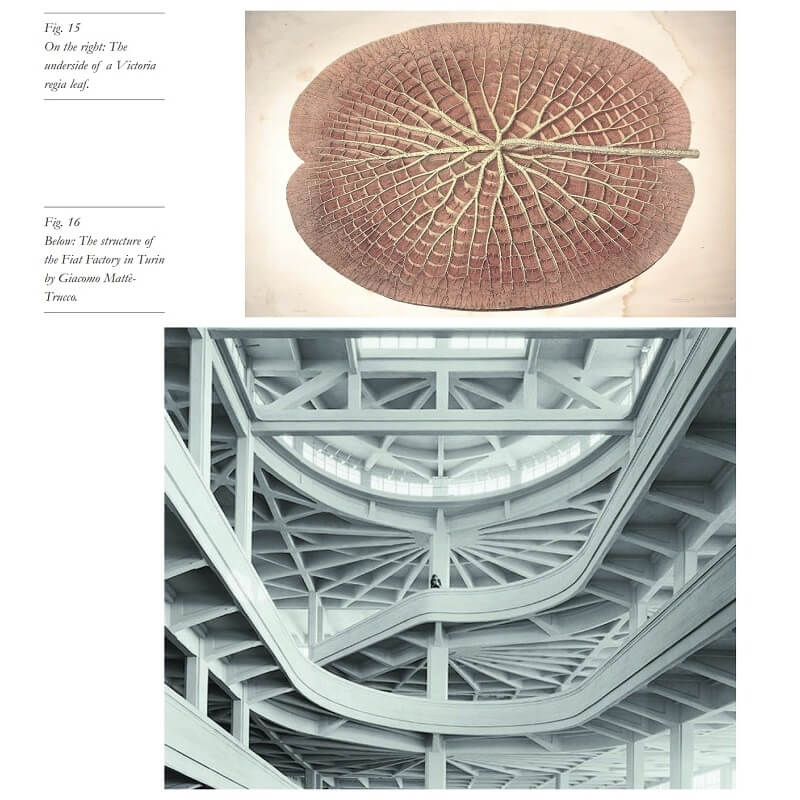
This thesis by Satu Niemi, provides one definition and interpretation of biomimicry and a review on how biomimicry could be used in architecture. This is done through a literary study and the analysis of chosen case examples. The case examples showcase the use of biomimicry in the design of building envelope solutions that respond to the changes in the environment by emulating different adaptive strategies found in plants.
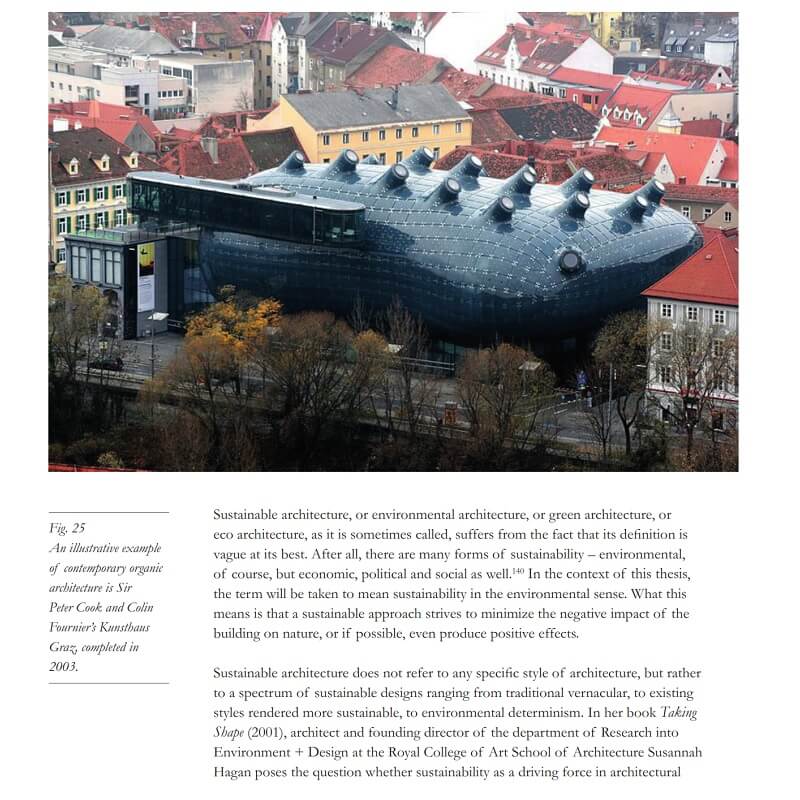 The thesis is in three parts: Defining biomimicry, Designing with biomimicry, and Case studies. In addition to the three parts, a summary with final thoughts will be given at the end. The first part of this thesis gives a brief overview of natural analogy in the history of Western architecture and design.
The thesis is in three parts: Defining biomimicry, Designing with biomimicry, and Case studies. In addition to the three parts, a summary with final thoughts will be given at the end. The first part of this thesis gives a brief overview of natural analogy in the history of Western architecture and design.
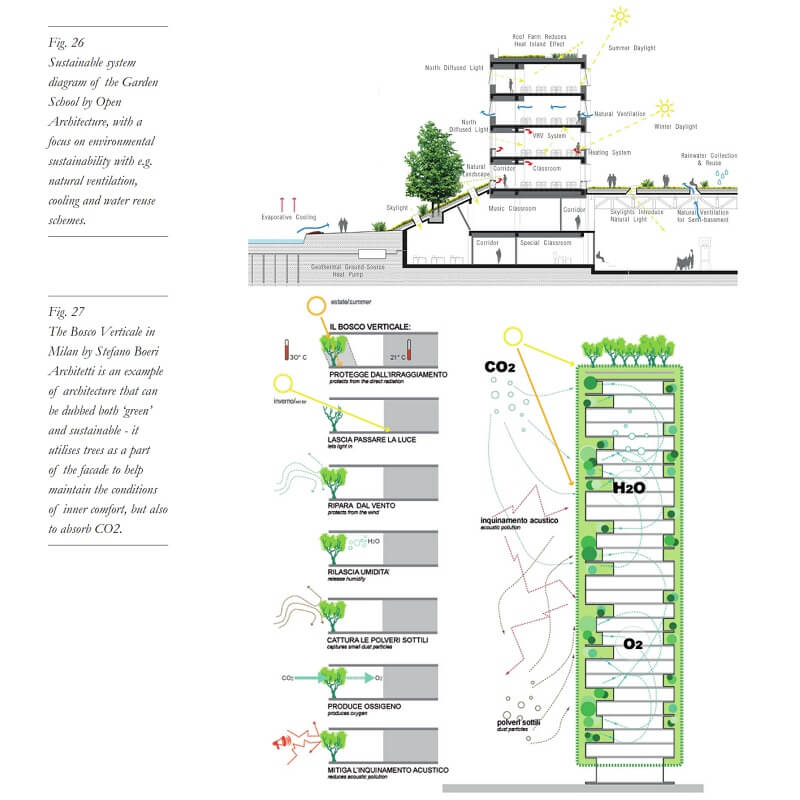 Two types of sub-categories in the natural analogy are identified: the organic analogy and the biological analogy. The biological analogy can be further divided into anatomical, classificatory, ecological, evolutionary, and growth analogies in accordance with the way parallels are drawn from natural phenomena and the concepts of biology. Developments in architectural styles are illustrated with examples from architecture.
Two types of sub-categories in the natural analogy are identified: the organic analogy and the biological analogy. The biological analogy can be further divided into anatomical, classificatory, ecological, evolutionary, and growth analogies in accordance with the way parallels are drawn from natural phenomena and the concepts of biology. Developments in architectural styles are illustrated with examples from architecture.
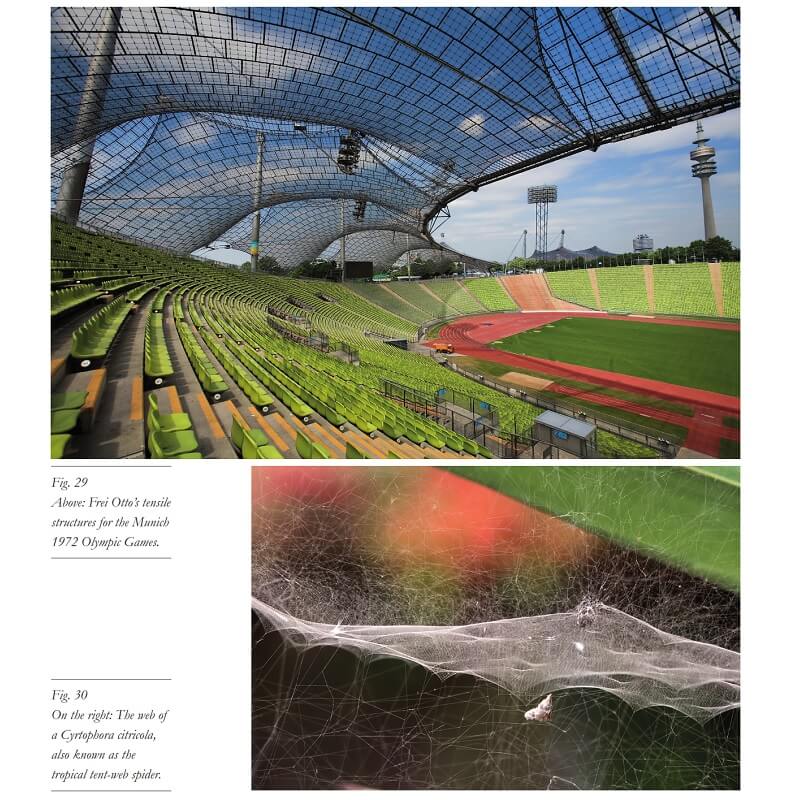 In this thesis, biomimicry is defined as mimicking nature by understanding and learning from the processes, materials, structures and systems found in nature, and utilising the results in comparable man-made designs, applications, methods or procedures to achieve more sustainable solutions to any given problem.
In this thesis, biomimicry is defined as mimicking nature by understanding and learning from the processes, materials, structures and systems found in nature, and utilising the results in comparable man-made designs, applications, methods or procedures to achieve more sustainable solutions to any given problem.
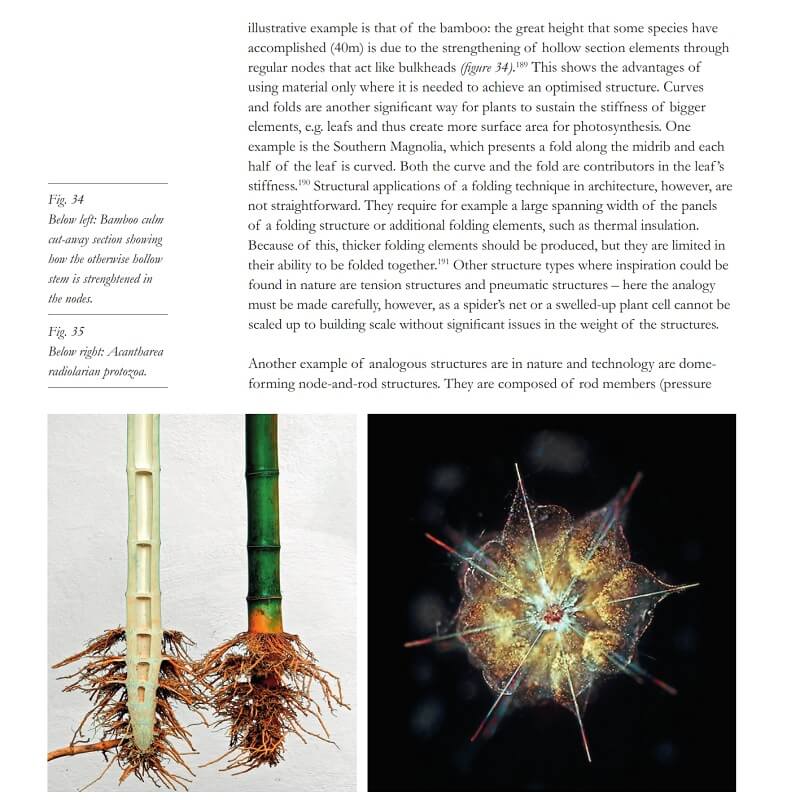 Biomimetics is a direct predecessor of architectural biomimicry, and the terms are sometimes used interchangeably. In this thesis, the use of the term biomimicry denotes a broader scope of ventures than the ‘engineerability’ of biomimetics, with environmental and societal aspects. A biomimicry-driven approach to design includes the incorporation of biomimetic solutions to an array of problems, often technical.
Biomimetics is a direct predecessor of architectural biomimicry, and the terms are sometimes used interchangeably. In this thesis, the use of the term biomimicry denotes a broader scope of ventures than the ‘engineerability’ of biomimetics, with environmental and societal aspects. A biomimicry-driven approach to design includes the incorporation of biomimetic solutions to an array of problems, often technical.
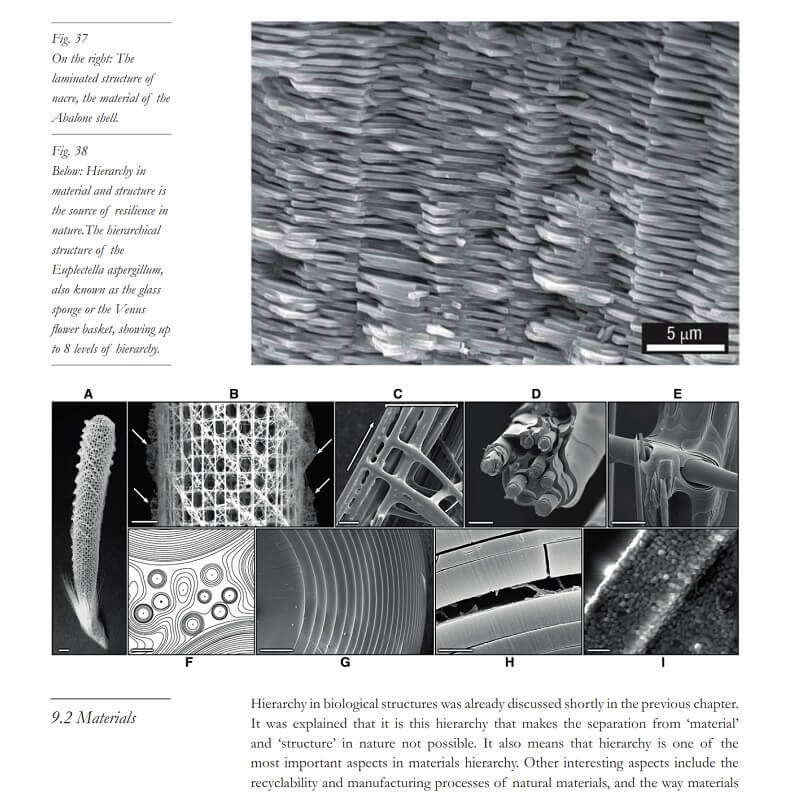 These solutions should enhance the environmental sustainability of the design and provide positive feedback to the systems the design is a part of. The problems to be solved with biomimicry at large need not be engineering problems, but in relation with architecture they most often are. The second part of this thesis further examines the concept of biomimicry in architecture and its definition in the contemporary context and use of the word.
These solutions should enhance the environmental sustainability of the design and provide positive feedback to the systems the design is a part of. The problems to be solved with biomimicry at large need not be engineering problems, but in relation with architecture they most often are. The second part of this thesis further examines the concept of biomimicry in architecture and its definition in the contemporary context and use of the word.
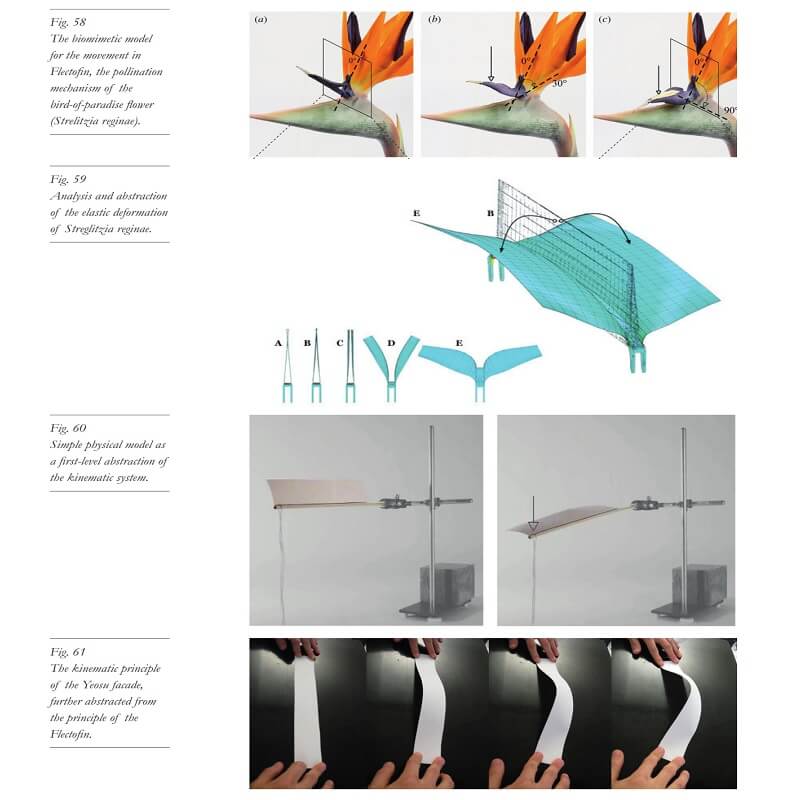 In addition, an overview of how biomimicry can be used to tackle challenges in architecture is given. Furthermore, the value and relevancy of biomimicry is discussed along with criticism towards the subject. Based on different approaches to a biomimetic design process found in literature, the author formulates their own take on the process, which is then used as an aid in the analysis of case studies.
In addition, an overview of how biomimicry can be used to tackle challenges in architecture is given. Furthermore, the value and relevancy of biomimicry is discussed along with criticism towards the subject. Based on different approaches to a biomimetic design process found in literature, the author formulates their own take on the process, which is then used as an aid in the analysis of case studies.
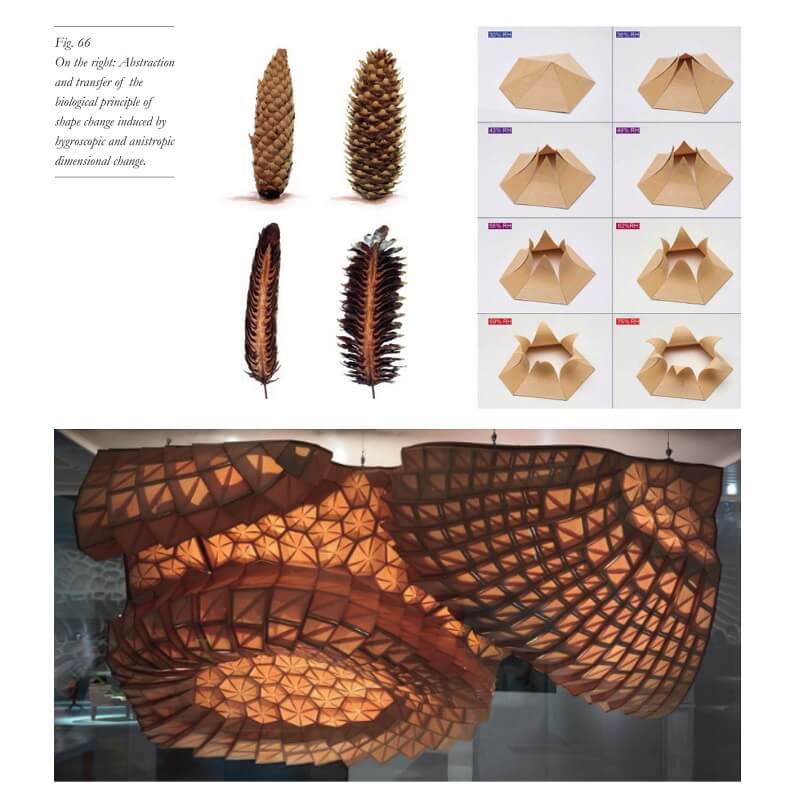 The third part of this thesis is the analysis of case studies according to the context laid out in the first and second parts of the thesis. The cases are each studied based on the type of natural analogy used, how biomimicry presents itself in the design process, and what the relationship between biomimicry and their architectural expression is.
The third part of this thesis is the analysis of case studies according to the context laid out in the first and second parts of the thesis. The cases are each studied based on the type of natural analogy used, how biomimicry presents itself in the design process, and what the relationship between biomimicry and their architectural expression is.
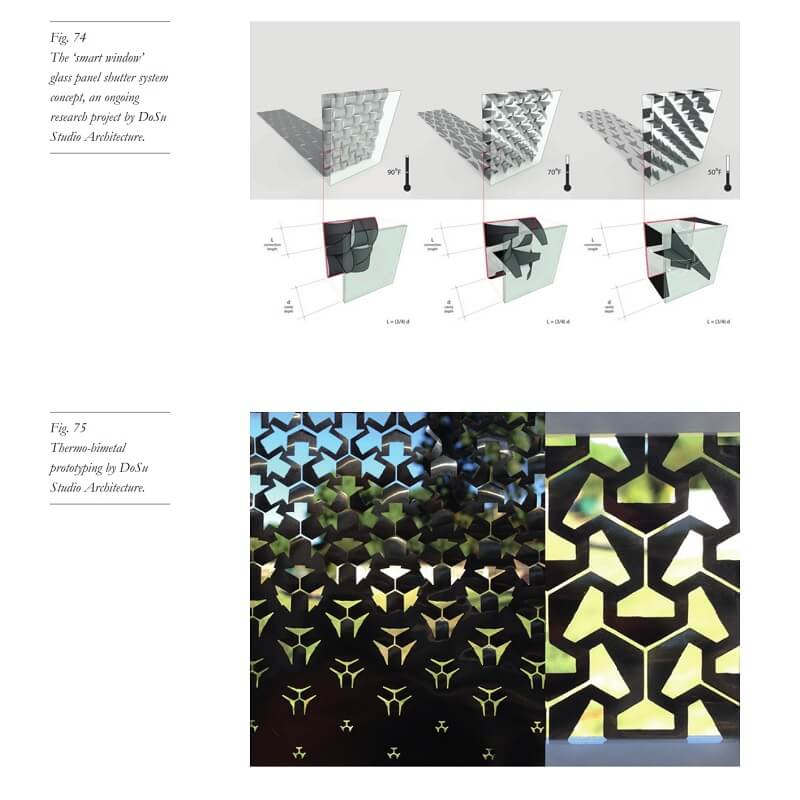 Finally, as a conclusion to the work, the definition and potential of biomimicry as a design approach in architecture is summarised, along with possible shortcomings of the approach and some speculations about the future of biomimicry in architecture.
Finally, as a conclusion to the work, the definition and potential of biomimicry as a design approach in architecture is summarised, along with possible shortcomings of the approach and some speculations about the future of biomimicry in architecture.





























Comments